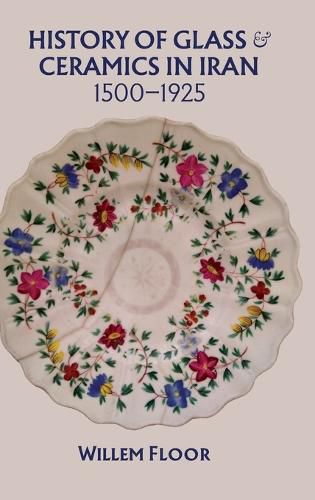Readings Newsletter
Become a Readings Member to make your shopping experience even easier.
Sign in or sign up for free!
You’re not far away from qualifying for FREE standard shipping within Australia
You’ve qualified for FREE standard shipping within Australia
The cart is loading…






This title is printed to order. This book may have been self-published. If so, we cannot guarantee the quality of the content. In the main most books will have gone through the editing process however some may not. We therefore suggest that you be aware of this before ordering this book. If in doubt check either the author or publisher’s details as we are unable to accept any returns unless they are faulty. Please contact us if you have any questions.
This comprehensive and richly detailed study by renowned scholar Willem Floor is the culmination of what is known about domestic glass and ceramic production-location, quality, craftsmen-in Iran from 1500 until the end of the Qajar period in 1925. Because of increasing imports, the Qajar government tried to improve domestic glass and ceramic techniques through transfer of technology, (once through direct foreign investment). The reasons for these failed attempts are discussed as well as the development of the import of glass and ceramic products. Over time, there was not only a change in the places of origin of glass and ceramic imports, but also in their volume and composition, which, during the Qajar period, included a large variety of cheap articles for mass consumption. There is an appendix for each chapter giving a market assessment for glass and ceramic production in Iran, written in French by Belgian consultants in 1891. The Belgian assessments offer a detailed chemical analysis of glass and ceramics made in Iran, as well as an inventory of the types of glassware and ceramics made by domestic craftsmen. It concludes with proposals for the establishment of a modern glass and ceramic factory in Iran. This superb body of research will not only be of great interest to Iranian scholars inside and outside the country, but also to everyone interested in the story of glass and ceramics throughout the world.
$9.00 standard shipping within Australia
FREE standard shipping within Australia for orders over $100.00
Express & International shipping calculated at checkout
This title is printed to order. This book may have been self-published. If so, we cannot guarantee the quality of the content. In the main most books will have gone through the editing process however some may not. We therefore suggest that you be aware of this before ordering this book. If in doubt check either the author or publisher’s details as we are unable to accept any returns unless they are faulty. Please contact us if you have any questions.
This comprehensive and richly detailed study by renowned scholar Willem Floor is the culmination of what is known about domestic glass and ceramic production-location, quality, craftsmen-in Iran from 1500 until the end of the Qajar period in 1925. Because of increasing imports, the Qajar government tried to improve domestic glass and ceramic techniques through transfer of technology, (once through direct foreign investment). The reasons for these failed attempts are discussed as well as the development of the import of glass and ceramic products. Over time, there was not only a change in the places of origin of glass and ceramic imports, but also in their volume and composition, which, during the Qajar period, included a large variety of cheap articles for mass consumption. There is an appendix for each chapter giving a market assessment for glass and ceramic production in Iran, written in French by Belgian consultants in 1891. The Belgian assessments offer a detailed chemical analysis of glass and ceramics made in Iran, as well as an inventory of the types of glassware and ceramics made by domestic craftsmen. It concludes with proposals for the establishment of a modern glass and ceramic factory in Iran. This superb body of research will not only be of great interest to Iranian scholars inside and outside the country, but also to everyone interested in the story of glass and ceramics throughout the world.